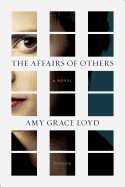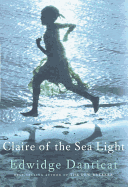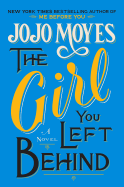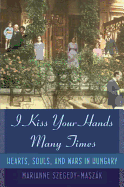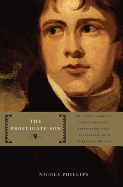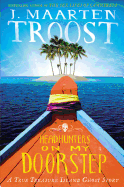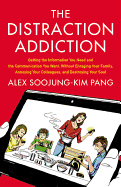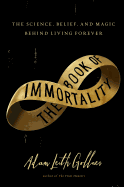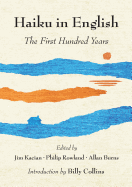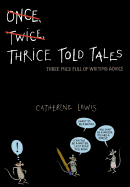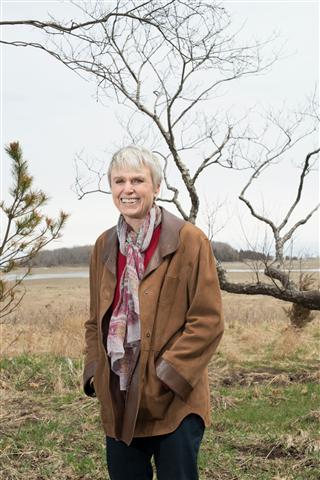 |
| ©Tsar Fedorsky Photography 2013 |
Seven years ago, Susan Cooper built a house on an island in Massachusetts, the setting for her new novel, Ghost Hawk. "It is not possible to live here without listening to the land, and to its past," she told us.
Cooper has always felt connected to her surroundings, having grown up deeply rooted in the British Isles. Nearly 40 years ago, when Cooper was cross-country skiing in New England, the winter landscape seized her imagination and combined with her homesickness for the England of her early novel Over Sea, Under Stone. The result was The Dark Is Rising, which received a 1974 Newbery Honor, and its sequels, including The Grey King, which won the 1976 Newbery Medal. In 2012, Cooper won the Margaret A. Edwards Award for the body of her work. With Ghost Hawk, she views the island from the points of view of a Native American boy and an English boy whose countrymen want to claim it as theirs.
How did you get started in children's books?
I was a reporter on the Sunday Times [in London], and one day the literary editor showed me a press release, saying the original publishers of E. Nesbit were running a contest for a family adventure story. He said, "Why don't you go in for this?" So I started to write one, but by chapter two, I found this character called Merriman, who had his roots in a Merlin figure. And the book turned into a fantasy, which disqualified it for the competition, but gave me Over Sea, Under Stone.
Do you think you'd have started writing for young people if not for that competition?
Who knows? The book I'd written before that was published as science fiction, a kind of dystopian adult book.
Why the long hiatus between Over Sea, Under Stone and The Dark Is Rising? And then that burst of productivity with those last four books?
I was sorry to leave the characters when I finished Over Sea, Under Stone, so the book is kind of open-ended. There had been a huge switch in my life, because my newspaper had sent me to the United States. While I was here, I met a 46-year-old widower with three teenage kids. I was 27. He started popping up in London, and we got married--to my editor's horror. So I moved here for good, which was a bit traumatic, but I didn't stop writing. Once I was living in the States, I was writing a column for an English paper, a book about America and a biography of the English author J.B. Priestley.
I was skiing, and I wanted to write a book set in snow. Then I happened to reread Over Sea, Under Stone. I was terribly homesick, and I sat there and wrote down the outline of the series of sequels, the five books of the Dark Is Rising series, of which Over Sea had been written over a decade before. I also wrote the last paragraph of the last book. It's part of an exhibit right now in England, at the Bodleian Library [Magical Books: From the Middle Ages to Middle Earth], which includes Philip Pullman, Alan Garner and me. And, of course, Lewis and Tolkien. They've got my last half-page.
 You say of your home that it's "not possible to live here without listening to the land." How did it first speak to you?
You say of your home that it's "not possible to live here without listening to the land." How did it first speak to you?
I'm looking out of my study window now, at creeks through a green saltmarsh stretching towards the Atlantic Ocean. I think I've always had a sense of place, and the history of place, looking at something and wondering what it might have been. Living with this all around me, it became overwhelming--the sense of "has it changed?" Certainly it was looking like this when the English first came to the States, which of course were not yet the States.
I did about five years of reading for this book. It was an enormous mixture of anything that's a historical record plus what you would call natural history--the ecology of the place. From being possessed by the place, I found my imagination populating it: first one character, Little Hawk, who was a Native American boy, then after a while another--a first-generation immigrant. The book is the intertwined stories of these two. The stresses and strains and tensions between the people who lived here and the people invading the country changed everything. These boys suffer from that.
How did you decide on that structure for the novel?
To some extent, it happened as it went along. I knew I had the two boys. I knew I wanted to be with Little Hawk during those three months of his proving time. I wanted to feel what it was like.
I think [Little Hawk's] meeting John the first time, with the fishing, was something that happened when I was writing. All the time after that, I had to sit with the historical framework in front of me. I said to my editor, "Don't ever let me do this again." There's an iron framework, and you can't change it. Everything in the lives of my two characters had to fit the frame. You're writing for kids, and you've got to get it right.
How did you research the traditions so crucial to Little Hawk's evolution as a character?
This is the difficult thing. There's no one who can tell you what life was like 320 years ago. You can read every single piece of writing that was written down then, and hope you're getting it right. When all is said and done, it's a novel based on historical background.
The Dramatists Guild once asked 20 playwrights of differing ethnic backgrounds this question: "Are we ethically entitled to write outside of our own ethnicity?" Nearly every one of them said, "If you're respectful and do your research as far as it's possible to do research, it is not wrong to write within someone else's ethnicity," which of course is what I've done in trying to be Little Hawk. I hope Native Americans won't object on principle; I hope they'll read the book.
 These early chapters demonstrate to readers how closely connected the Native Americans are to the land. You write, "Thousands more of the white men continued to arrive from over the sea, and their settlements multiplied and spread, as our father Yellow Feather and other sachems sold them the use of land. This selling was not what either side thought it should be." Is this the crux of the matter?
These early chapters demonstrate to readers how closely connected the Native Americans are to the land. You write, "Thousands more of the white men continued to arrive from over the sea, and their settlements multiplied and spread, as our father Yellow Feather and other sachems sold them the use of land. This selling was not what either side thought it should be." Is this the crux of the matter?
Yes. The English had this arrogance, the moment they set foot on the continent; they assumed they could take ownership of it, as if land was a thing you could buy. But for the people who lived here, the land is not a thing, it was their world. The environmental movement today--and the Gaia Principle, thinking of the Earth as a sentient thing, an organism--all this is related to the way the Native Americans treated the land.
John is 10 when he witnesses a pivotal event that shapes the person he will become. Is there something about that age that's significant? In The Dark Is Rising, Will Stanton discovers on his 11th birthday that he is the Sign-Seeker, last of the immortal Old Ones.
It's the age I always find myself writing about. The age on the cusp of puberty, before the hormones begin and you get that one overriding preoccupation--a good subject for stories, but not the kind of story I'm writing. I remember how it felt to be that age. There's an awareness of right and wrong, and a hope that you can combat evil.
In your the Dark Is Rising quintet and in Ghost Hawk you create worlds in which the supernatural or spiritual resides easily in everyday life.
I think it comes of growing up in a country with such layers of history and prehistory. When I was a kid I walked past Windsor Castle, which is 900 years old, and a grassy mound that was an Iron Age fort. At one point a farmer dug up a field, and found a Roman mosaic--we were ruled by the Romans for 400 years. You have an awareness, a sense of all the people who ever lived here. That's the great irony of the English invading others, when their own country was made up of one invasion after another, driving us all West.
At the memorial service for Margaret McElderry, you gave a wonderful talk. You didn't know what to write next, and you'd said, 'I feel as if my talent had just died!' And she replied, ''Yes, well, that can happen." How did you get past that period then, and how do you get past it now?
That was a prize example of my beloved editor opening the mouth and putting in the foot. At my age we all, between books, think, "I've written myself out," and then another idea comes along. There's a lovely quote, which I've written in the front of my diary, from Russell Hoban. He said at 78, the age I am now, "From now on I'm going to write a book every year, because when the tank is getting empty, I think you drive a little faster."
What do you do when you're between books?
If it's not wintertime, I'm likely to go for long walks. You can't force an idea. An idea is like a butterfly, it comes and goes, and you have to be careful not to squash it when you try to catch it.
There are some books that I go on rereading between books. Things like Eliot's "Four Quartets," the Mabinogion, Walter de le Mare's "Come Hither" and Robert Graves's White Goddess--old friends that I plug myself into. My imagination responds to them, I suppose. I look out of the window at the sea, at the marsh and listen for an idea. --Jennifer M. Brown
Susan Cooper: Listening to the Land
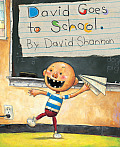 The fun twist in First Day Jitters by Julie Danneberg, illustrated by Judith DuFour Love (Charlesbridge), is that even teachers get nervous when school starts. David Shannon sends up school rules with a heavy dose of humor in David Goes to School (Blue Sky/Scholastic); his blackboard shenanigans and cafeteria line cuts offer parents a chance to review proper etiquette.
The fun twist in First Day Jitters by Julie Danneberg, illustrated by Judith DuFour Love (Charlesbridge), is that even teachers get nervous when school starts. David Shannon sends up school rules with a heavy dose of humor in David Goes to School (Blue Sky/Scholastic); his blackboard shenanigans and cafeteria line cuts offer parents a chance to review proper etiquette.

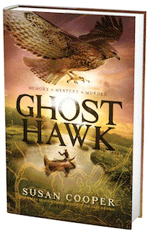


 You say of your home that it's "not possible to live here without listening to the land." How did it first speak to you?
You say of your home that it's "not possible to live here without listening to the land." How did it first speak to you?  These early chapters demonstrate to readers how closely connected the Native Americans are to the land. You write, "Thousands more of the white men continued to arrive from over the sea, and their settlements multiplied and spread, as our father Yellow Feather and other sachems sold them the use of land. This selling was not what either side thought it should be." Is this the crux of the matter?
These early chapters demonstrate to readers how closely connected the Native Americans are to the land. You write, "Thousands more of the white men continued to arrive from over the sea, and their settlements multiplied and spread, as our father Yellow Feather and other sachems sold them the use of land. This selling was not what either side thought it should be." Is this the crux of the matter?